Jan 24
Supporting Communities on the Intranet
From James Robertson this really nice video interview with the intranet team from US architectural firm Perkins Eastman about how they support their distributed practice area communities on their intranet. At 5 minutes it’s short but has some good practical advice including “Don’t under-estimate how much training and support is needed”.
I especially like the way James has cued the key ideas being expressed in subtitles – this might have been done because of traffic noise, but it’s a very good way of helping viewers follow. The video is from Step Two’s inaugural Intranet Innovation Awards (Perkins Eastman were a gold award winner), and there are other videos here.
Jan 22
Watching Collaboration as it Happens
Found via if:book (thanks Ben), this site is absolutely hypnotic. Follow the flags around the world map as they track anonymous edits to Wikipedia in almost real-time. What would it be like to track edits and contributions to an intranet or corporate knowledge resource like this?
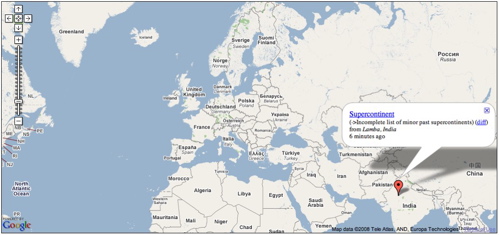
Jan 22
When Not To Share
Another nail in the coffin of the indiscriminate exhortation to “share your knowledge”! A very clever post from Marshall Goldsmith ever so gently critiquing those who share to show off, compete for attention, assert their superiority, or simply preach. It’s annoying and often demotivating. (I should know, I’ve been on both the giving and receiving end of this behaviour). But damn… can’t ANYthing be universally true?

Jan 21
We Are Moving!
From 1st February we’ll be at our new office, just a stone’s throw away from our current one, at 19A Keong Saik Road, Singapore 089126. Come and visit!

Jan 21
Collison’s Ignorance Spiral
From Chris Collison today, this very sharp adaptation of the Kolb Learning Cycle to explain how AARs are misused. Chris should blog more..
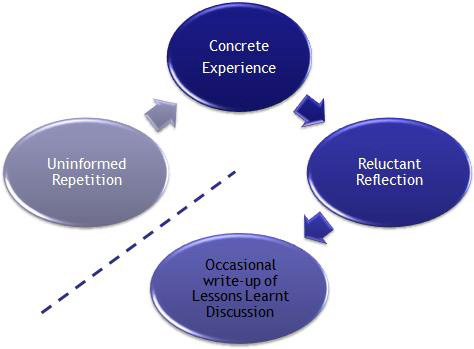
Jan 18
Believing our own Propaganda
We’ve been thinking a lot about KM communications lately, and have just recently done a workshop on storytelling, where we were looking at the believability of stories, and how stories can be hijacked or artificially designed for propaganda purposes. Dave Snowden among others has a healthy scepticism about this, and points out that human beings are often very very good at detecting when a story is inauthentic and manipulative – they generate “anti-stories” in their own heads that directly counter the propaganda they are being fed.
So if human beings are so good at detecting fake stories, why does that end of the organisational storytelling movement prosper with senior executives lapping it up, and why do we in knowledge management tell so ardently what so many of our listeners manifestly do not believe? The answer came to me the other day in this lovely poem from Dave Bonta (quoted in full by permission – visit Dave’s blog!).
DECOY
Is the angler fish ever tempted
by its own bait? Does it ever stir
from whatever trance-like state
passes for sleep in the aphotic zone,
see the glowing decoy & think,
Ah — mine! & surge forward,
jaws agape, like the proverbial donkey
tempted by a carrot? Or does it get
snappish at its traveling companion,
persistent as a bad conscience,
haunting as the image of its own death?
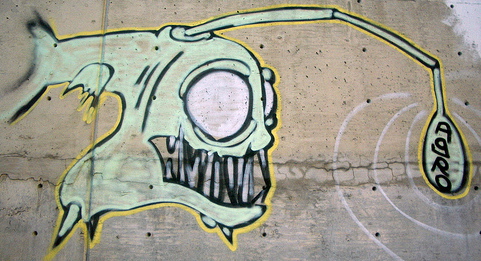
Photocredit: Picklerevenge
Jan 17
A Taxonomy of Fallacies
Yum yum, a site that somehow manages to combine the topic of my last book with the topic of my next book (and I thought ignorance management was getting as far away as possible from the last book): “A Taxonomy of Logical Fallacies” from the Fallacy Files website. Each node has very clear examples and explanations. It’s missing a whole facet for cognitive errors, but a vital addition nevertheless to mapping the domain of ignorance. Thanks to Thomas Vander Wal for this.
Jan 17
Fostering Social Bonding in Communities
Some very nice suggestions from Shawn over at Anecdote about simple, practical and enjoyable activities you can use to foster social bonding at community events.
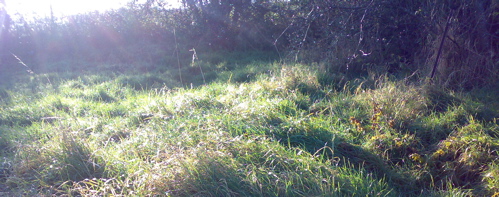
Jan 17
Random Fun or Serendipity?
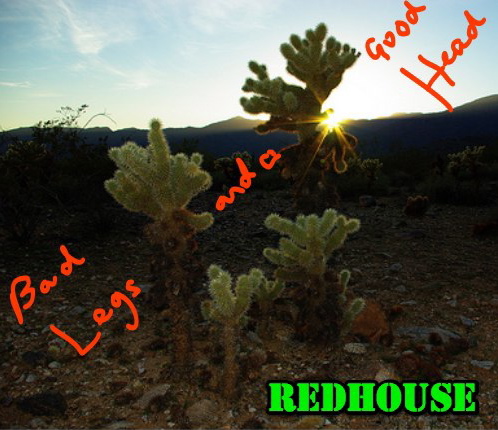
There’s a tagging meme going round where you design your own CD album cover using randomly generated elements for title, band name and cover image drawn from Quotationspage.com, Wikipedia, and Flickr.
Nobody tagged me to do it, but I saw it in Head Rambles and liked it so gave it a whirl even without an invitation (is that bad meme etiquette?). It’s completely random, so it says nothing about me at all (honest) – but I like it. And I’m not going to tag anyone else to do it (you know you want to).
As for the album cover: if you think the cover is cool, you should hear the music. Thanks Grandad!
Here’s how it works:
You have to create a CD Cover for the first release of your band. Obviously you need a band and a title, so this is how you go about it……
Go here. The first article title on the page is the name of your band.
Go here. The last four words of the very last quote is the title of your album.
Go here. The third picture, no matter what it is, will be your album cover.
Jan 15
Social Software Guides
Max Kiesler has published an extremely useful list of 40 downloadable open source social software applications (thanks Maish). And Wikimatrix is a great site for comparing the features availability and requirements for 99 wiki software packages – with discussion forums as well. Thanks to Cory Banks and Steven Kaye for this lead (via actKM).

